CEFTAZIDIME INJECTION 1GM

₹104.85*
MRP ₹116.5
10% off
₹99.02*
MRP ₹116.5
15% CB
₹17.48 cashback(15%)
Free Delivery
With Circle membership
(Inclusive of all Taxes)
This offer price is valid on orders above ₹800. Apply coupon PHARMA10/PHARMA18 (excluding restricted items)
Know Your Delivery Time
Provide Delivery Location
Available Offers
 Prescription drug
Prescription drugWhats That

Secure Payment

India's Most Trusted Pharmacy

Genuine Products
Composition :
Manufacturer/Marketer :
Consume Type :
Return Policy :
Expires on or after :
About CEFTAZIDIME INJECTION 1GM
CEFTAZIDIME INJECTION 1GM belongs to a class of drugs called antibiotics used in the treatment of several bacterial infections of the urinary tract, respiratory tract, brain, bones and joints, ears, throat, skin, and soft tissue. Bacterial infection is a condition in which harmful bacteria grow in the body and cause infection. It can infect any part of the body and multiply very quickly. CEFTAZIDIME INJECTION 1GM does not work against infections caused by the virus.
CEFTAZIDIME INJECTION 1GM contains Ceftazidime, an antibiotic that works by interfering with the formation of the bacterial cell wall (a protective covering) that is necessary for their survival. Thereby damaging the bacterial cell wall and killing bacteria.
CEFTAZIDIME INJECTION 1GM will be administered by a healthcare professional; do not self-administer. In some cases, you may experience redness and swelling along with a vein, red raised skin rash, which may be itchy, burning, painful, inflammation, or swelling at the site of injection or diarrhea. Most of these side effects of CEFTAZIDIME INJECTION 1GM do not require medical attention and gradually resolve over time. However, if the side effects persist or worsen, please consult your doctor.
If you are allergic to CEFTAZIDIME INJECTION 1GM or any other medicines, please tell your doctor. If you are pregnant or breastfeeding, please inform your doctor before taking CEFTAZIDIME INJECTION 1GM. Drive only if you are alert as CEFTAZIDIME INJECTION 1GM may cause dizziness. If you are on a controlled sodium diet, inform your doctor before taking CEFTAZIDIME INJECTION 1GM. If you have a widespread rash with peeling skin and blisters, please consult a doctor immediately as these might be signs of Stevens-Johnson syndrome.
Uses of CEFTAZIDIME INJECTION 1GM
Directions for Use
Medicinal Benefits
CEFTAZIDIME INJECTION 1GM contains Ceftazidime, a broad-spectrum antibiotic that acts against both aerobic (grow in the presence of oxygen) and anaerobic (grow in the absence of oxygen) gram-negative and gram-positive bacteria. It is used in the treatment of several bacterial infections of the urinary tract, respiratory tract, brain, bones and joints, ears, throat, skin and soft tissue. CEFTAZIDIME INJECTION 1GM interferes with the formation of the bacterial cell wall (a protective covering) that is necessary for their survival. Thereby damages the bacterial cell wall and kills bacteria. Additionally, CEFTAZIDIME INJECTION 1GM may be used to treat fever due to bacterial infections in patients with low white blood cells count and also to prevent bacterial infections in men during prostate surgery.
How CEFTAZIDIME INJECTION 1GM Works
Storage
- If you have symptoms such as pain, swelling, redness, or warmth in your veins after taking medication, contact your doctor right once. Share information about your symptoms, medication regimen, and medical history.
- Your doctor will then assess your medication regimen to determine if it's contributing to the thrombophlebitis. This assessment will help identify the best course of action to manage your condition and prevent further complications.
- Your doctor may suggest certain diet and lifestyle changes to help manage your condition. This may include increasing your intake of foods rich in omega-3 fatty acids, staying hydrated, exercising regularly, and maintaining a healthy weight. Your doctor may also advise medications to reduce inflammation, prevent blood clots, or manage pain if necessary.
- If your condition does not improve or persists, consult your doctor and report your condition. Your doctor will assess your progress, adjust your treatment plan if necessary, and provide appropriate advice to ensure the best possible outcome.
- If you notice swelling, pain, redness, or pus at the injection site, contact your doctor for advice and appropriate care.
- Use ice packs on the injection site for at least 20 minutes multiple times a day.
- Rest the affected area and elevate it to reduce inflammation if possible.
- Avoid intense physical activity that could worsen the injection site.
- If you need regular injections, try using different spots to avoid severe inflammation in one place.
- Consider using medications like ibuprofen or paracetamol to relieve pain, and hydrocortisone cream or anti-itch lotion to ease swelling and discomfort.
- Report the itching to your doctor immediately; they may need to change your medication or dosage.
- Use a cool, damp cloth on the itchy area to help soothe and calm the skin, reducing itching and inflammation.
- Keep your skin hydrated and healthy with gentle, fragrance-free moisturizers.
- Try not to scratch, as this can worsen the itching and irritate your skin.
- If your doctor prescribes, you can take oral medications or apply topical creams or ointments to help relieve itching.
- Track your itching symptoms and follow your doctor's guidance to adjust your treatment plan if needed. If the itching persists, consult your doctor for further advice.
- Skin rash caused by allergies is due to irritants or allergens. Therefore, avoid contact with such irritants.
- Consult your doctor for proper medication and apply an anti-itch medication. Follow the schedule and use the medication whenever needed.
- Protect your skin from extreme heat and try to apply wet compresses.
- Soak in the cool bath, which gives a soothing impact to the affected area.
- Inform your doctor immediately if you experience a fever after starting a new medication.
- Your doctor may adjust your medication regimen or dosage as needed to minimize fever symptoms.
- Monitor your body temperature to monitor fever progression.
- Drink plenty of fluids, such as water or electrolyte-rich beverages, to help your body regulate temperature.
- Get plenty of rest and engage in relaxation techniques, such as deep breathing or meditation, to help manage fever symptoms.
- Under the guidance of your doctor, consider taking medication, such as acetaminophen or ibuprofen, to help reduce fever.
- If your fever is extremely high (over 103°F), or if you experience severe symptoms such as confusion, seizures, or difficulty breathing, seek immediate medical attention.
- Eat foods rich in vitamins C and E, and healthy fats.
- Consider soft foods like smoothies, soups, and scrambled eggs.
- Take supplements like vitamins C and E, zinc, and omega-3 fatty acids under medical supervision.
- Include anti-inflammatory foods like omega-3 rich foods, berries, leafy greens, and spices.
- Avoid allergens and consider an elimination diet.
- Practice gentle skin care with non-irritating cleansers and moisturizers.
- Keep skin well-moisturized with fragrance-free products.
- Monitor for complications like infection and temperature regulation.
- Let your doctor know if there are unsual symptoms after taking the medication, such as red patches on your skin.
- Your doctor may change your medication, lower the dose, or stop the treatment to help manage the symptoms.
- Avoid heavy physical activity and get plenty of rest to prevent further worsening of the symptoms.
- Apply cold packs to the affected areas for relief.
- Keep yourself hydrated or take supplements to get enough vitamins.
- Over-the-counter pain relievers can help with discomfort.
What if I have taken an overdose of CEFTAZIDIME INJECTION 1GM
Drug Warnings
If you are allergic to CEFTAZIDIME INJECTION 1GM or any other medicines, please tell your doctor. If you have kidney problems or diabetes, inform your doctor before taking CEFTAZIDIME INJECTION 1GM. If you are pregnant or breastfeeding, please inform your doctor before taking CEFTAZIDIME INJECTION 1GM. CEFTAZIDIME INJECTION 1GM may interact with certain tests such as glucose (sugar) in urine and coomb’s test (blood test), resulting in unusual results. Therefore, inform the lab technician that you are taking CEFTAZIDIME INJECTION 1GM before undergoing any tests. If you are on a controlled sodium diet, inform your doctor before taking CEFTAZIDIME INJECTION 1GM. If you have a widespread rash with peeling skin and blisters, please consult a doctor immediately as these might be signs of Stevens-Johnson syndrome. Drive only if you are alert as CEFTAZIDIME INJECTION 1GM may cause dizziness. You are recommended to complete the full course of CEFTAZIDIME INJECTION 1GM as prescribed by your doctor for effective results.
Drug-Drug Interactions
Drug-Drug Interactions
Login/Sign Up
When BCG vaccine is used with Ceftazidime Injection 1gm, its effectiveness may be reduced.
How to manage the interaction:
Taking Ceftazidime Injection 1gm with BCG vaccine is not recommended, but can be taken together if prescribed by a doctor. In case you experience any unusual side effects, consult a doctor. Do not discontinue any medications without consulting a doctor.
Taking the cholera vaccine after or along with Ceftazidime Injection 1gm may reduce the activity of the vaccine.
How to manage the interaction:
Although there is a possible interaction between Ceftazidime Injection 1gm and Cholera vaccines, you can take these medicines together if prescribed by your doctor. You should wait at least 14 days after finishing your antibiotic treatment before receiving the cholera vaccine in order to ensure an appropriate immune response. Do not stop using any medications without consulting a doctor.
Taking the cholera vaccine after or along with Ceftazidime Injection 1gm may reduce the activity of the vaccine.
How to manage the interaction:
Although taking Ceftazidime Injection 1gm with Cholera, live attenuated can possibly result in an interaction, but it can be taken if your doctor has advised it. You should wait at least 14 days after finishing your antibiotic treatment before receiving the cholera vaccine in order to ensure an appropriate immune response. Do not stop using any medications without a doctor's advice.
Drug-Food Interactions
Drug-Food Interactions
Login/Sign Up
Diet & Lifestyle Advise
- Take probiotics after completing the full course of CEFTAZIDIME INJECTION 1GM to restore some healthy bacteria in the intestines that may have been killed. Taking probiotics after antibiotic treatment can reduce the risk of antibiotic-associated diarrhea. Certain fermented foods like cheese, yogurt, kombucha, sauerkraut, and kimchi can help to restore the good bacteria of the intestine.
- Include fiber-rich foods, as they can be easily digested by your gut bacteria, which helps stimulate their growth. Thus, fiber-rich foods may help restore healthy gut bacteria after a course of antibiotics. Whole grains such as whole-grain bread and brown rice should be included in your diet.
- Make sure you drink plenty of water or other fluids every day while you are taking CEFTAZIDIME INJECTION 1GM.
- Avoid alcohol consumption as it may increase adverse effects.
Habit Forming
Therapeutic Class
CEFTAZIDIME INJECTION 1GM Substitute

Forzid Injection 1 gm
by Others
₹199.30per tabletDimcef 1gm Injection
by Others
₹225.00per tabletFortacef 1 gm Injection 1's
by AYUR
₹228.60per tabletC ZID 1gm Injection 1's
by AYUR
₹198.00per tabletDasault 1gm Injection
by Others
₹191.42per tablet
Product Substitutes
Alcohol
Caution
The interaction of CEFTAZIDIME INJECTION 1GM with alcohol is unknown. Please consult a doctor before consuming alcohol while using CEFTAZIDIME INJECTION 1GM.
Pregnancy
Caution
CEFTAZIDIME INJECTION 1GM is a category B pregnancy drug and is given to pregnant women only if the doctor thinks benefits outweigh risks. Please consult a doctor if you are pregnant or planning for pregnancy.
Breast Feeding
Caution
CEFTAZIDIME INJECTION 1GM may be excreted in human milk in small amounts. Therefore, it is given to breastfeeding mothers only if the doctor thinks benefits are greater than risks. Please consult a doctor if you are breastfeeding.
Driving
Caution
CEFTAZIDIME INJECTION 1GM may cause dizziness. Therefore, avoid driving if you feel dizzy after taking CEFTAZIDIME INJECTION 1GM.
Liver
Caution
Take CEFTAZIDIME INJECTION 1GM with caution, especially if you have a history of Liver diseases/conditions. The dose may be adjusted by your doctor as required.
Kidney
Caution
Take CEFTAZIDIME INJECTION 1GM with caution, especially if you have a history of Kidney diseases/conditions. The dose may be adjusted by your doctor as required.
Children
Caution
CEFTAZIDIME INJECTION 1GM should be used in children only in doses as prescribed by a doctor.
FAQs
CEFTAZIDIME INJECTION 1GM contains Ceftazidime, an antibiotic that works by damaging the bacterial cell wall (protective covering) that is necessary for their survival. Thereby, kills bacteria.
CEFTAZIDIME INJECTION 1GM may be used to treat meningitis (inflammation of membranes covering the brain and spinal cord) caused by bacterial infection. CEFTAZIDIME INJECTION 1GM is an antibiotic that kills bacteria and prevents the spread of infection.
CEFTAZIDIME INJECTION 1GM may cause diarrhoea as a common side effect. However, if the condition persists, worsens or if you notice blood or mucus in stools, avoid taking CEFTAZIDIME INJECTION 1GM and consult a doctor immediately.
You are not recommended to take CEFTAZIDIME INJECTION 1GM with furosemide as co-administration of these two medicines may increase the risk of kidney problems, especially in patients with kidney impairment and also when CEFTAZIDIME INJECTION 1GM is given in high doses. However, please consult your doctor before taking CEFTAZIDIME INJECTION 1GM with other medicines.
CEFTAZIDIME INJECTION 1GM is not used to treat viral infections. CEFTAZIDIME INJECTION 1GM is an antibiotic that is used to treat only bacterial infections.
You are not recommended to stop taking CEFTAZIDIME INJECTION 1GM without consulting your doctor as it may worsen the infection or cause recurring symptoms. Therefore, take CEFTAZIDIME INJECTION 1GM for as long as your doctor has prescribed it and if you experience any difficulty while taking CEFTAZIDIME INJECTION 1GM, please consult your doctor.
CEFTAZIDIME INJECTION 1GM belongs to a class of antibiotics used to treat several bacterial infections.
CEFTAZIDIME INJECTION 1GM contains Ceftazidime, an antibiotic that works by interfering with the formation of the bacterial cell wall (a protective covering) that is necessary for their survival. Thereby damaging the bacterial cell wall and killing bacteria.
Common side effects of CEFTAZIDIME INJECTION 1GM may include redness and swelling along with a vein, a red raised skin rash that may be itchy, burning, painful, inflammation, or swelling at the site of injection, or diarrhoea. Most of these side effects of CEFTAZIDIME INJECTION 1GM do not require medical attention and gradually resolve over time. However, if the side effects persist or worsen, please consult your doctor.
Country of origin
Disclaimer
Author Details
We provide you with authentic, trustworthy and relevant information












